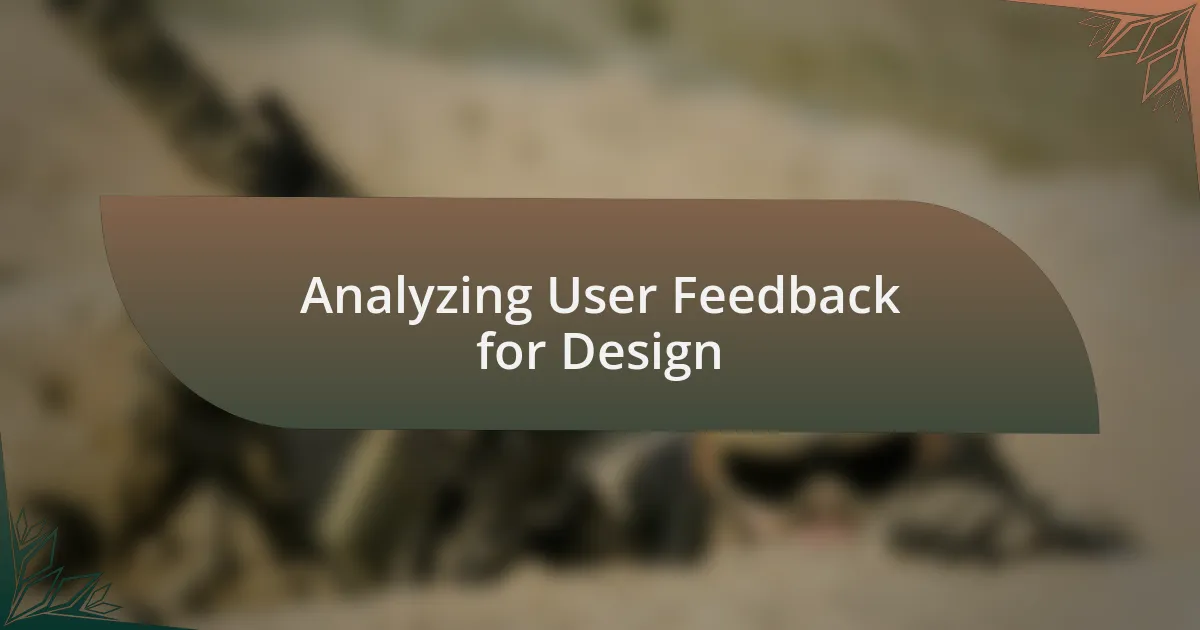Key takeaways:
- Engaging directly with users through observation and interviews reveals insights beyond surface-level data, shaping user-centered designs.
- Analyzing user feedback involves not just what users say, but also how they express their feelings, leading to richer, more engaging designs.
- Creating detailed user personas from research findings helps keep real users at the forefront of design decisions.
- Iterative testing and thorough documentation are crucial for capturing valuable insights and improving user experiences over time.

Introduction to UX Research
UX research is the backbone of designing user-centered experiences. From my perspective, it’s not just about gathering data; it’s about understanding the emotions and motivations behind user behavior. When I first started in this field, I remember the lightbulb moment I had while observing users interact with a prototype. The confusion on their faces was a clear signal that something wasn’t working.
Engaging directly with users is where the magic happens. I often find myself wondering: what do users truly think and feel when they interact with a product? By conducting interviews and usability tests, I’ve discovered invaluable insights that would have been impossible to unearth through mere analytics. Each interaction offers a glimpse into the minds of users, turning abstract data into tangible factors that can shape design decisions.
Alternatively, leveraging techniques like A/B testing enables us to compare different designs to see which resonates more with users. I’ve personally seen how small changes can lead to significant improvements in user satisfaction. Wouldn’t it be incredible to create a design that not only meets user needs but delights them while doing so? That’s the ultimate goal of UX research—transforming insights into emotional connections.

Analyzing User Feedback for Design
Analyzing user feedback is like piecing together a puzzle; each comment can reveal a vital part of the user experience. I recall a project where initial user surveys indicated satisfaction, but follow-up interviews uncovered deeper frustrations. It was a stark reminder that surface-level metrics can sometimes mask underlying issues that need our attention.
When I analyze feedback, I focus not just on what users say but how they say it. For instance, during a recent usability test, a participant expressed excitement but hesitated when navigating a new feature. Their body language spoke volumes, prompting me to dig deeper. How can we design an experience that translates that excitement into smooth interaction? This moment taught me that the nuances in user feedback can lead to richer, more engaging designs.
Visualizing user feedback often helps me spot trends and outliers more easily. I once created a simple infographic to showcase user sentiments about a website redesign. This not only clarified the most pressing concerns but also inspired my team to brainstorm creative solutions collaboratively. How often do we overlook the power of visual representation in synthesizing user insights? Harnessing these tools can transform raw data into actionable design strategies, ensuring that we truly meet user needs.

My Personal UX Research Process
When I embark on UX research, I start with empathy-driven observation. I vividly remember a project where I simply sat with users as they navigated our website. Seeing their expressions and hearing their spontaneous reactions made the research so much more powerful than any survey ever could. How often do we underestimate the value of direct observation?
After gathering insights, I really enjoy synthesizing findings into personas. A while ago, I created detailed personas based on user interviews, and it opened a new doorway for my team. Each persona represented real users with specific needs, desires, and frustrations. How can we design effectively if we don’t keep these real people at the forefront of our decision-making?
To validate my insights, I often use A/B testing to explore how changes impact user behavior. I remember making a small tweak to a call-to-action button based on user feedback that resulted in a significant increase in conversion rates. There’s something incredibly gratifying about numbers telling you that you’re on the right track. Isn’t it fascinating how even minor adjustments can lead to major impacts in user experience?

Lessons Learned from My Research
Reflecting on my UX research journey, I learned the significance of actively engaging with users. Once, during a usability test, a participant expressed frustration over how long it took to locate a simple feature. The moment I saw their eyes light up when I introduced a more intuitive option was profound. It made me realize that behind every data point, there’s a genuine user experience waiting to be understood.
Another lesson I’ve internalized is the power of iterative testing. Early in my career, I resisted changing designs too frequently, fearing it would confuse users. However, after introducing iterative prototypes and gathering feedback, I witnessed a transformation in user satisfaction—like a beautiful ripple effect. Isn’t it remarkable how embracing change can cultivate a smoother journey for both users and designers alike?
Ultimately, documenting my findings meticulously has been invaluable. There was a time when I neglected thorough note-taking, resulting in lost insights that could have driven impactful decisions. Now, each observation, even the smallest, is a well of knowledge that informs future projects. How often do we underestimate the treasure trove of information waiting to be captured?